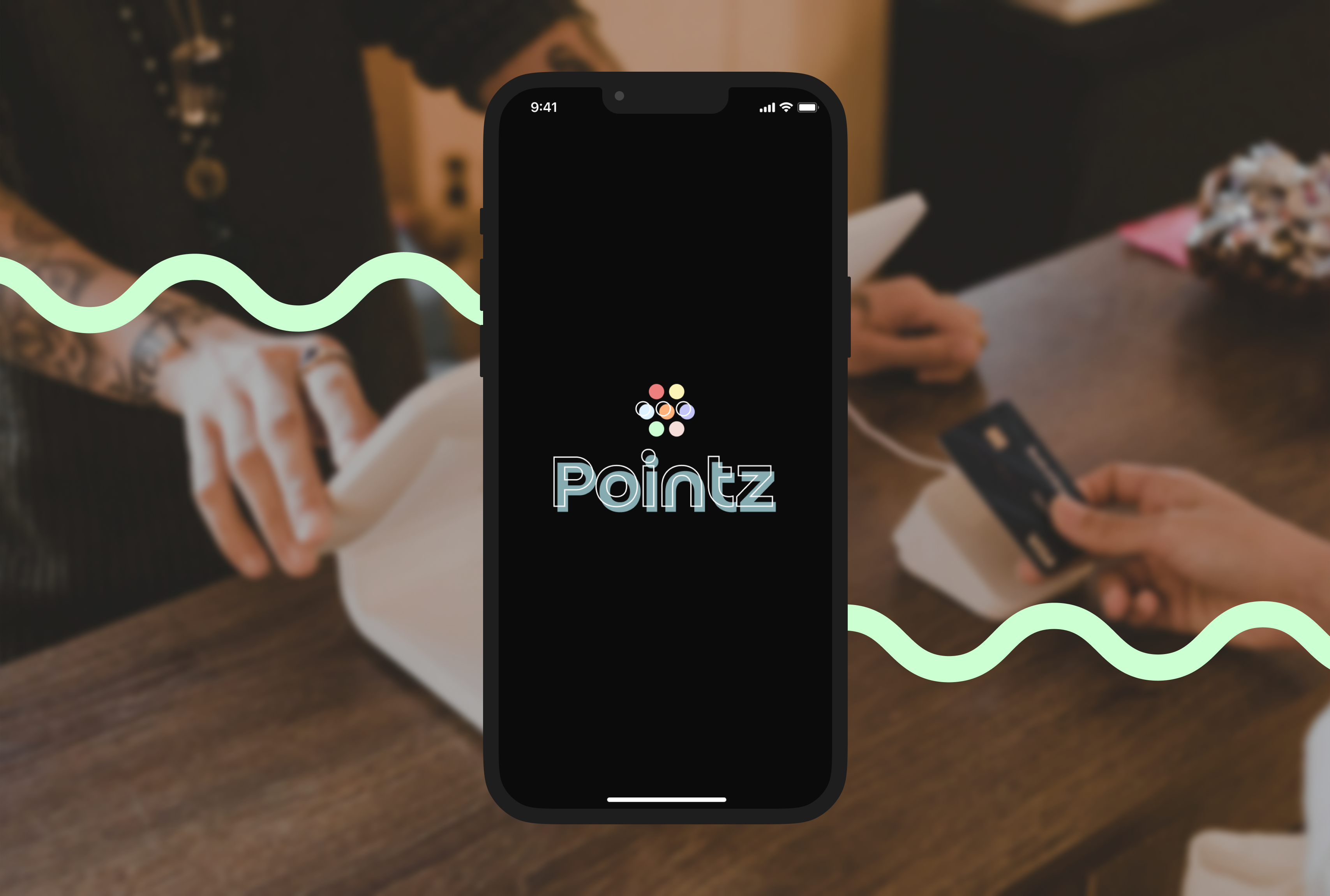Pointz
For loyalty program participants who have difficulties organising their loyalty cards, we present Pointz, an App that manages all cards, offering great options for redeeming points and a single barcode for all establishments.
Overview
Company
Capstone Project - Product Management
Role
Product Designer & Manager
Year
2022
The Challenge
Loyalty programmes were meant to build stronger relationships between brands and their customers. But over time, the experience became fragmented and frustrating. Many people sign up for multiple programmes, only to forget about them or stop using them altogether.
In the UK, 58% of registered loyalty members rarely or never use their accounts — not because they don’t value rewards, but because the process feels complex, inconvenient, and inconsistent.
So the question became:
How might we make loyalty effortless, meaningful, and accessible — all in one place?

So the question became:
How might we make loyalty effortless, meaningful, and accessible — all in one place?
Research
To understand the landscape, I began with market data analysis:
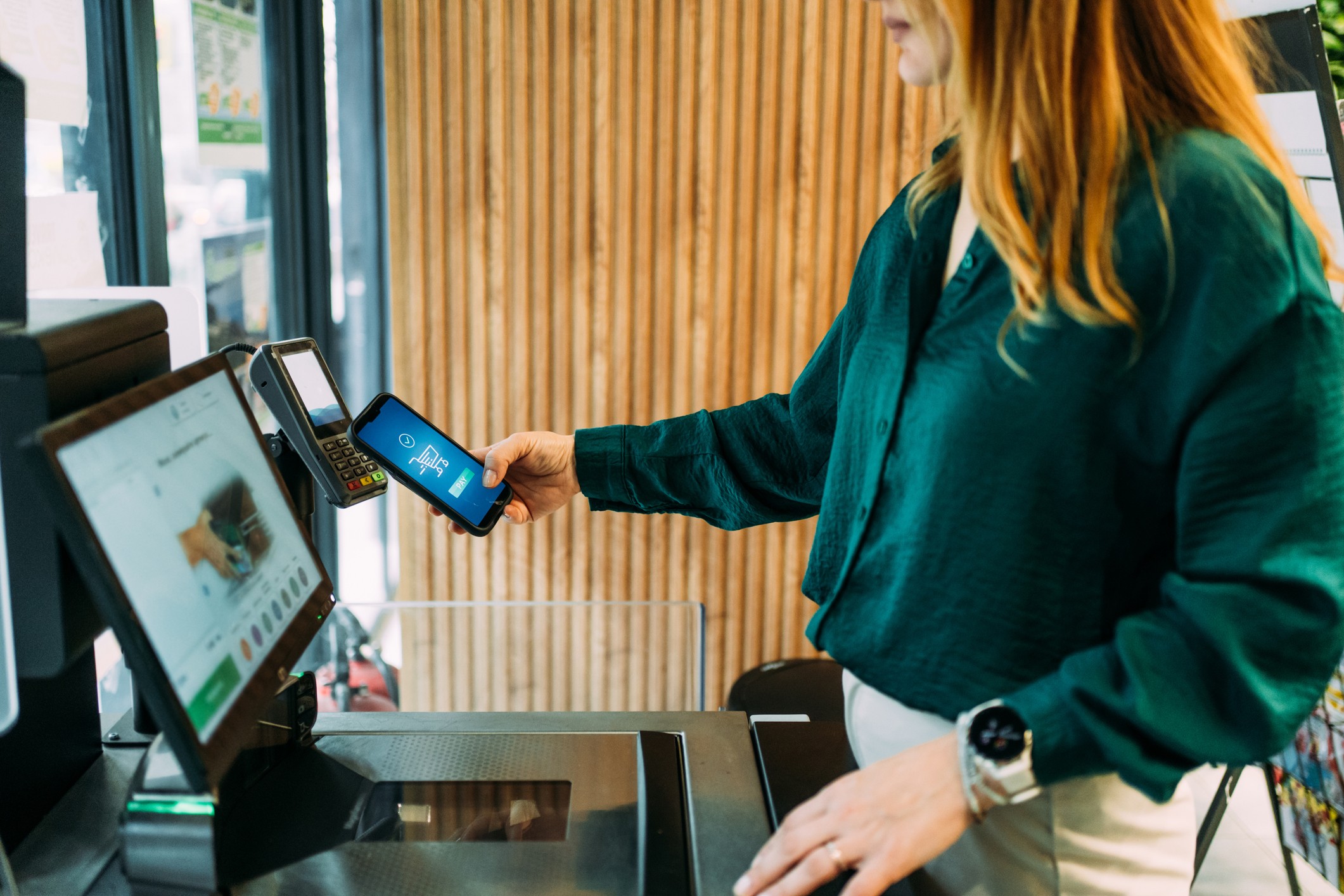
91% of Brits own at least one loyalty card, using them an average of 3 times per week.

74% said they’d engage more if rewards were personalised.

Nearly half (49%) would prefer a cardless system.

30% struggle to understand how loyalty schemes actually work.
These insights revealed a clear gap: people like rewards, but not the effort it takes to manage them.
To dig deeper, I conducted user interviews with a diverse group of loyalty card users. A few themes quickly emerged:
- Managing multiple cards feels messy and disorganised.
- Rewards often seem confusing or not worth the effort.
- Cashback and simple point systems are most motivating.
- People crave a digital solution that doesn’t rely on physical cards.
Together, these findings validated my hypothesis:
Loyalty programme users struggle to manage and understand their schemes, leading to low engagement and missed opportunities.
Action
Using the research as a foundation, I wrote 20 user stories focused on reducing friction and increasing clarity. Each one aimed to make loyalty simpler and more meaningful:
- As a user, I want to see all my cards in one place so I don’t lose track of them.
- As a user, I want to scan a single barcode across shops so I never forget my card again.
- As a user, I want to understand my rewards easily so I know when and how to redeem them.
To bring empathy into every design choice, I developed two personas that represented distinct user types — the organised saver and the spontaneous shopper. Their goals and frustrations guided decisions around information architecture, prioritised features, and visual design.
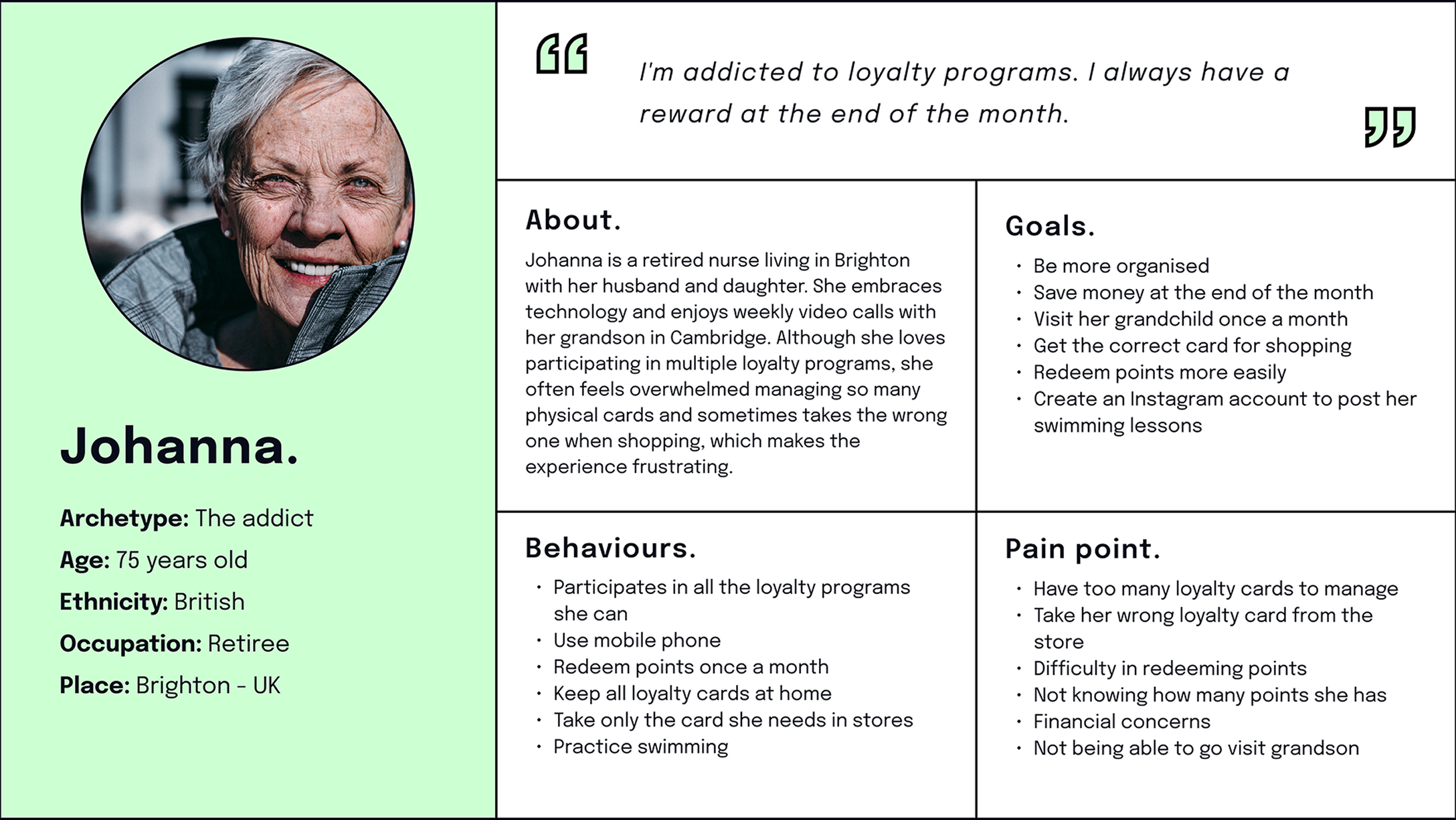

Defining the Vision
Vision Statement
To help people get the reward they deserve.
Value proposition
For loyalty members overwhelmed by multiple cards and confusing systems, Pointz offers a single, smart solution — all cards in one app, with clear redemption options and one barcode for every store.
MVP
This became the foundation of the MVP: a clean, centralised platform focused on usability and validation.
The MVP
The MVP focused on doing one thing extremely well: bringing simplicity to loyalty management.
Core features:
- Card Consolidation: Add all partner loyalty programmes in seconds.
- Universal Barcode: One code works across multiple stores.
- Smart Onboarding: Quick setup, no manual required.
I kept the visual language minimal — clear icons, calm colours, and smooth micro-interactions to make Pointz feel instantly usable, even for those who usually avoid tech-heavy tools.
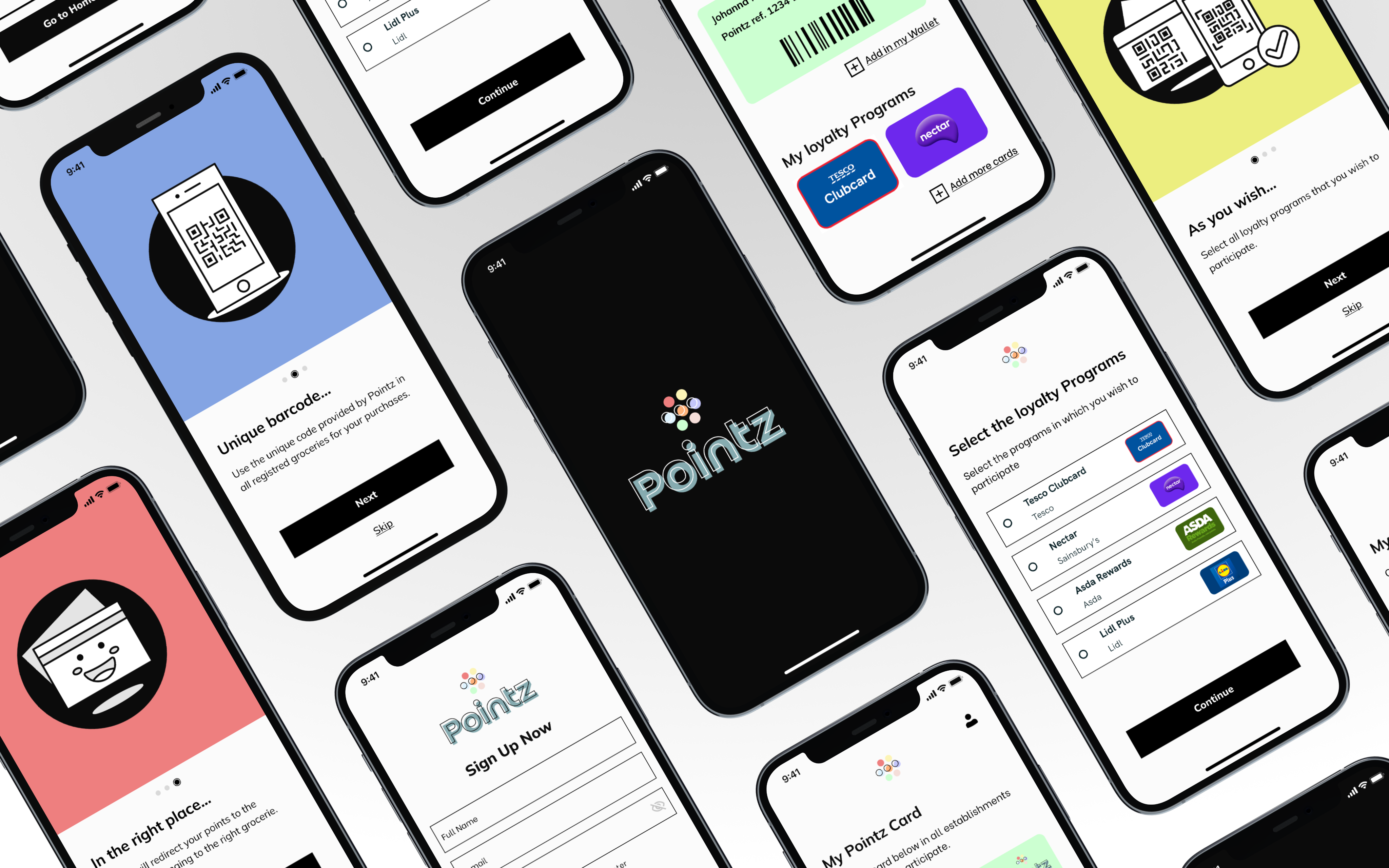
Measuring Success
To assess the MVP’s effectiveness, I defined key metrics across four areas:
Adoption & Usage
Sign-ups, cards added, barcode usage frequency.
Engagement
Daily active users, time on key flows, retention rates.
Satisfaction
Usability feedback, post-use ratings, qualitative insights.
Performance
Barcode scan success and technical stability.
This ensured the MVP could be tested not just for aesthetics, but for real behavioural validation.
SWOT Matrix
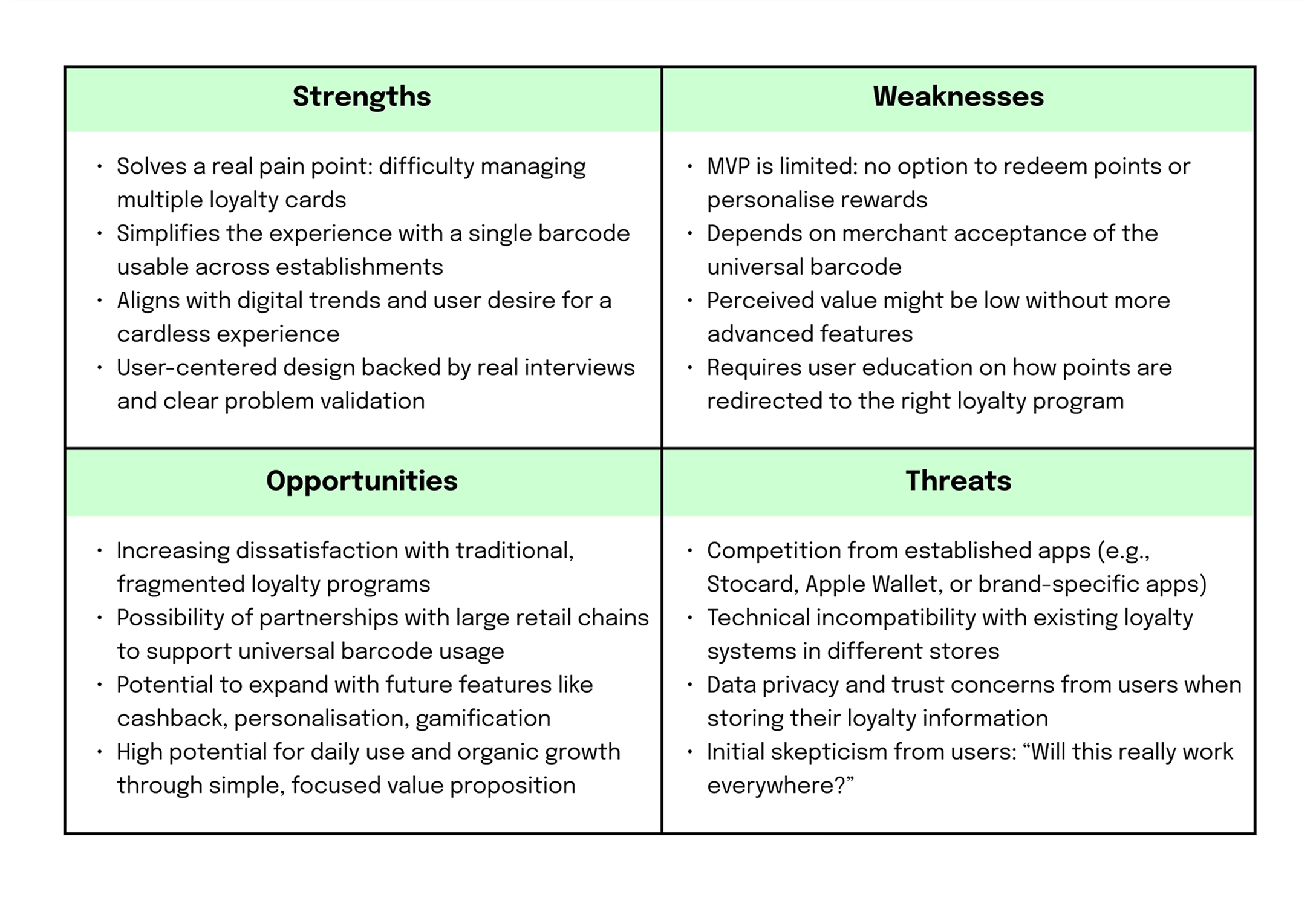
Risk Matrix

A look inside
Onboarding
A few guided screens introduce users to the core value of Pointz — simplicity and control.
Adding Programmes
Users can add loyalty cards by selecting partners.
Universal barcode
Users can add the programs they want to participate in by selecting them from a list of partners.
Impact
Although Pointz has not yet been officially launched, its potential impact is significant — both for users and for partner businesses. The app’s core proposition goes beyond simply digitising loyalty cards; it aims to simplify loyalty relationships, making them more accessible, engaging, and effective.
For users:
- Greater convenience: By eliminating the need to carry multiple physical cards, the app makes everyday life easier and ensures users don’t miss out on benefits due to forgetfulness.
- Less frustration: Centralising loyalty schemes and making rewards easier to understand helps reduce the confusion and lack of motivation often associated with traditional programmes.
- Digital inclusion: With a clean and intuitive design, Pointz could also engage users who typically avoid complex digital tools.

For partner business:
- Increased retention and engagement: A loyalty programme that’s easier to use is more likely to be adopted and used regularly, strengthening customer relationships.
- Access to valuable insights: Digital usage data allows businesses to better understand customer behaviour and tailor promotions accordingly.
- Lower operational costs: Going digital reduces the need for printing and distributing physical cards, cutting costs per loyal customer.
- Competitive edge: By joining a unified platform like Pointz, small and medium-sized businesses can more easily compete with large chains that already have dedicated apps.
Takeaways
Designing Pointz taught me that innovation doesn’t always mean adding more — sometimes it means removing what gets in the way.
- People don’t need more features; they need fewer steps.
- A single smart idea (like a universal barcode) can transform behaviour.
- Conversations reveal what surveys can’t — the why behind frustration.
- If your app needs instructions, it’s probably too complicated.
This project reinforced the power of simplicity: when design removes friction, users naturally find value.
Next Steps:
- Add point tracking and redemption features to close the reward loop.
- Partner with stores to make the universal barcode truly universal.
- Test with a wider audience for inclusivity and scalability.
- Explore small delights — like cashback or surprise bonuses — to keep loyalty exciting.
Pointz is more than a wallet — it’s a bridge between customers and brands, built on ease, trust, and mutual reward.
